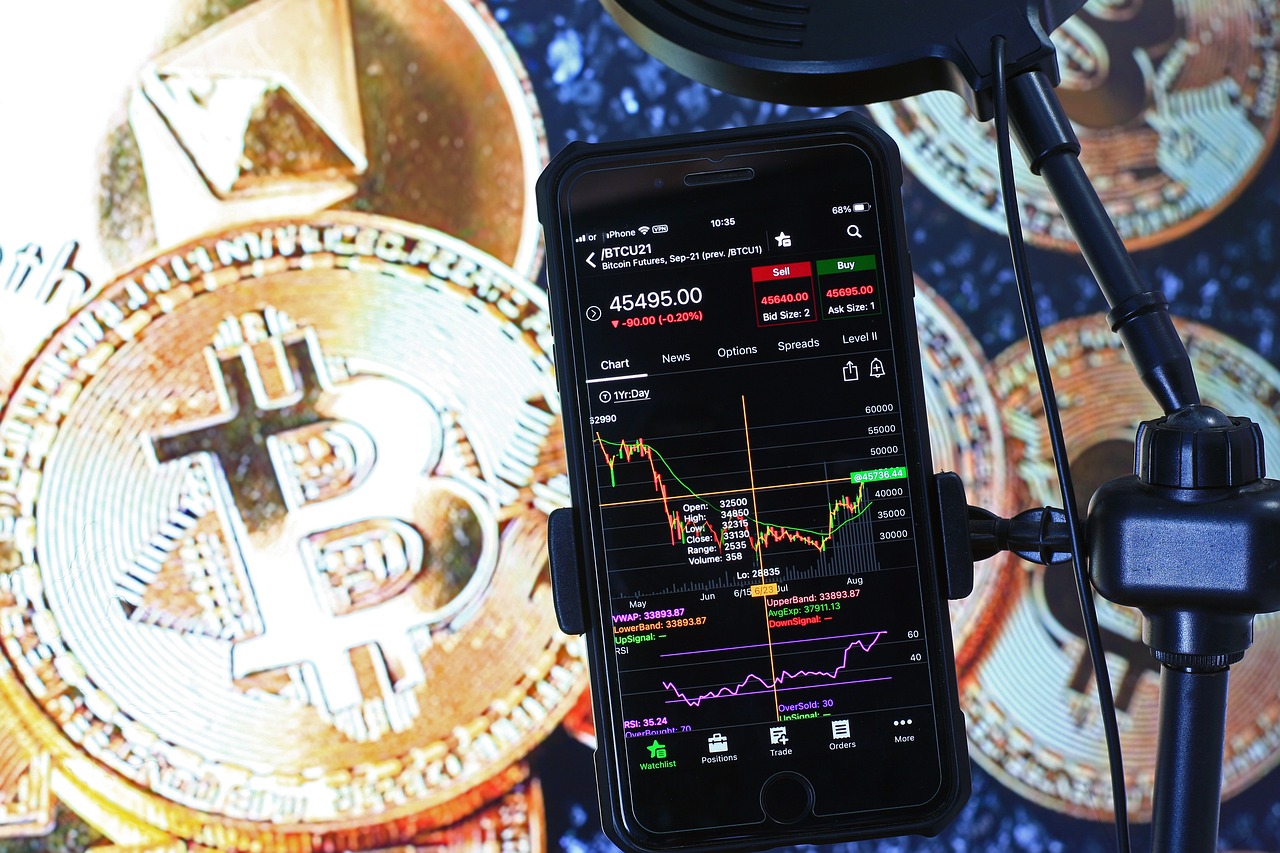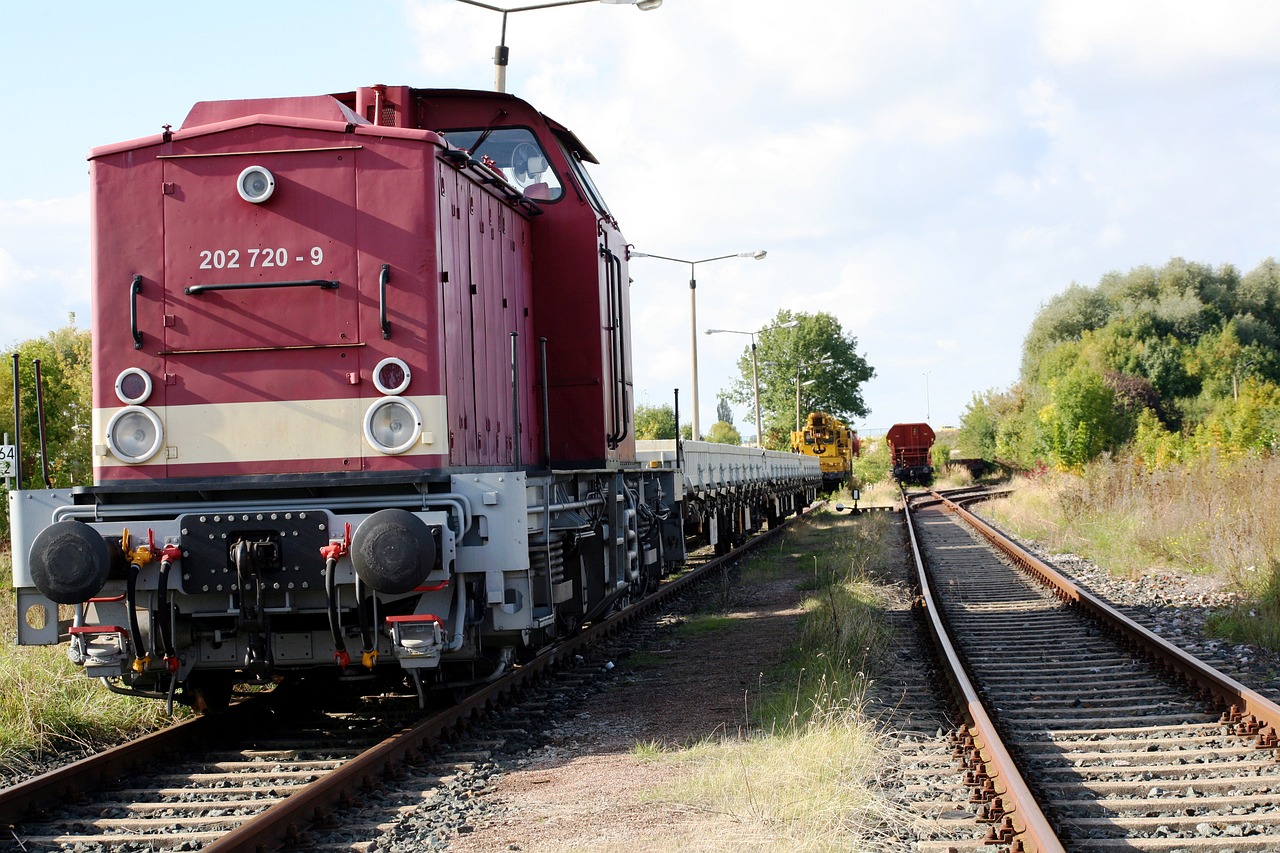The Role of Blockchain in Supply Chain Efficiency
In today's fast-paced world, where consumer demands are ever-evolving and market dynamics are shifting, the need for efficient supply chain operations has never been more critical. Enter blockchain technology—a revolutionary tool that is transforming the way businesses manage their supply chains. But what exactly is blockchain, and how does it enhance supply chain efficiency? In this article, we will explore the multifaceted benefits of blockchain, from improving transparency to reducing costs, and how these advantages foster trust among stakeholders. Ultimately, this leads to increased innovation and operational excellence across various industries.
At its core, blockchain is a decentralized digital ledger that securely records transactions across multiple computers. Unlike traditional databases, which can be manipulated or altered, blockchain ensures that once information is entered, it becomes immutable. This means that changes cannot be made without the consensus of all parties involved, making it a game-changer for supply chain management. The fundamental principles of blockchain—immutability, transparency, and security—create a robust framework that enhances the reliability of supply chain operations. Imagine a world where every transaction is recorded in a way that is both secure and transparent; this is the promise of blockchain technology.
One of the most significant advantages of blockchain technology is its ability to provide unparalleled transparency. In a typical supply chain, information can be siloed, leading to inefficiencies and a lack of trust among stakeholders. However, with blockchain, all parties can access real-time data, allowing for better tracking of products and reducing the risk of fraud. This transparency not only helps in tracking products but also builds consumer trust, as customers can verify the authenticity and origin of the products they purchase.
Imagine being able to monitor the movement of goods in real-time, knowing exactly where your products are at any given moment. With blockchain, this is not just a dream—it's a reality. Companies can utilize blockchain to track goods throughout the supply chain, enhancing operational efficiency and minimizing delays. This real-time tracking capability ensures that businesses can respond quickly to disruptions, whether they are caused by weather events, logistical challenges, or other unforeseen circumstances. The ability to access up-to-the-minute data allows companies to make informed decisions that can significantly impact their bottom line.
To illustrate the effectiveness of real-time tracking through blockchain, let’s look at some real-world examples. Companies like Walmart and IBM have successfully implemented blockchain technology to enhance their supply chain processes. Walmart, for instance, uses blockchain to track the origin of its food products, allowing it to quickly identify and address safety concerns. This not only improves food safety but also boosts consumer confidence in the brand. Similarly, IBM's Food Trust initiative enables various stakeholders in the food supply chain to access a shared ledger, improving traceability and accountability.
Despite the numerous benefits of real-time tracking with blockchain, there are challenges to consider. Implementing this technology requires significant investment in infrastructure and training. Moreover, the lack of industry-wide standards can create hurdles in achieving seamless integration across different platforms. Companies must navigate these challenges carefully to reap the full benefits of blockchain technology.
Blockchain fosters trust among supply chain participants by providing a secure and verifiable record of transactions. This level of transparency and security is crucial in building strong relationships among stakeholders, including suppliers, manufacturers, and consumers. When all parties can rely on an immutable record of transactions, it leads to better collaboration and partnerships, ultimately enhancing the overall efficiency of the supply chain.
In addition to enhancing transparency and trust, blockchain technology can significantly reduce operational costs through automation. By automating various processes, businesses can streamline supply chain operations, leading to increased efficiency and savings. For instance, the use of smart contracts—self-executing contracts with the terms of the agreement directly written into code—can eliminate the need for intermediaries, thus reducing transaction costs and speeding up processes.
Smart contracts powered by blockchain are revolutionizing the way agreements and transactions are handled in supply chains. By automating these processes, companies can reduce the potential for human error and ensure that all parties adhere to the agreed-upon terms. This not only speeds up transactions but also enhances accountability, as all actions are recorded on the blockchain.
While blockchain offers numerous advantages, it is essential to acknowledge the potential risks and limitations associated with its adoption. Cybersecurity threats pose a significant risk, as the technology is still relatively new and evolving. Additionally, regulatory challenges can hinder the widespread adoption of blockchain in supply chains. Companies must remain vigilant and proactive in addressing these vulnerabilities to fully leverage the benefits of blockchain technology.
- What is blockchain technology? Blockchain is a decentralized digital ledger that records transactions securely across multiple computers.
- How does blockchain enhance supply chain efficiency? It improves transparency, reduces costs, and fosters trust among stakeholders.
- What are smart contracts? Smart contracts are self-executing contracts with the terms directly written into code, allowing for automated agreements and transactions.
- What challenges are associated with implementing blockchain? Challenges include technological integration, the need for industry standards, and cybersecurity threats.

Understanding Blockchain Technology
Blockchain technology is revolutionizing how we think about data management and transactions. At its core, a blockchain is a decentralized digital ledger that securely records information across a network of computers. This means that instead of a single entity controlling the data, it is distributed across multiple nodes, which enhances security and reliability. Imagine a public library where everyone can see and access the same books, but no one can alter the content without consensus—this is akin to how blockchain operates.
One of the fundamental principles of blockchain is immutability. Once a transaction is recorded on the blockchain, it cannot be changed or deleted. This feature is crucial for supply chain management, as it ensures that all data is accurate and trustworthy. Think of it like a permanent ink pen; once you write something down, it’s there for good. This characteristic not only prevents fraud but also increases accountability among all parties involved in the supply chain.
Another vital aspect is transparency. Every participant in the blockchain network has access to the same information in real-time. This level of visibility allows stakeholders to track products from origin to destination, significantly reducing the chances of errors and misunderstandings. For example, if a product is delayed, everyone involved can see where it is at any given moment, making it easier to address issues and maintain efficiency.
Lastly, blockchain is built on a foundation of security. Each transaction is encrypted and linked to the previous one, creating a chain that is incredibly difficult to tamper with. This encryption acts like a fortress, protecting sensitive data from unauthorized access. In the context of supply chains, this means that not only are transactions secure, but the overall integrity of the supply chain is safeguarded.
In summary, the principles of blockchain—immutability, transparency, and security—are what make it a game-changer for supply chain management. As industries continue to explore the potential of this technology, the possibilities for enhanced efficiency and innovation are virtually limitless. With these attributes, blockchain stands to transform the way we conduct business, fostering a new era of trust and collaboration among all participants in the supply chain.

Enhancing Transparency in Supply Chains
In today's fast-paced world, transparency has become more than just a buzzword; it's a necessity. When it comes to supply chains, the ability to see what's happening at every stage of the process can make or break a business. Imagine you're a consumer, eagerly awaiting a package. You check the tracking information, and instead of vague updates, you see real-time data showing exactly where your order is. This is the power of blockchain technology. By providing unparalleled transparency, blockchain allows all parties involved—from manufacturers to consumers—to access real-time data regarding product movement and status.
With blockchain, the days of uncertainty and guesswork are over. The technology creates a digital trail that is both immutable and secure, meaning that once a transaction is recorded, it cannot be altered. This characteristic not only helps in tracking products but also significantly reduces the chances of fraud. When every transaction is documented and can be verified by all stakeholders, it builds a layer of trust that is often missing in traditional supply chains. For instance, if a product is labeled organic, consumers can verify its journey from farm to table, ensuring they get what they pay for.
Moreover, this transparency extends beyond mere product tracking. It fosters a culture of accountability among all participants in the supply chain. When everyone knows that their actions are recorded, the likelihood of unethical practices diminishes. In industries like food and pharmaceuticals, where safety is paramount, this level of transparency can be a game-changer. It allows companies to quickly identify and address issues, like a contaminated batch of products, before they escalate into major crises.
One of the standout features of blockchain technology is its ability to provide real-time tracking of goods. Imagine a world where every shipment can be monitored live, allowing companies to adjust their operations on the fly. This capability not only enhances operational efficiency but also minimizes delays in the supply chain. For example, if a shipment is delayed due to weather conditions, companies can quickly reroute or adjust their logistics to mitigate the impact. The ability to react swiftly is crucial in maintaining customer satisfaction and operational flow.
Several companies have already begun to reap the benefits of real-time tracking through blockchain. For instance, a major retail chain implemented a blockchain solution that allowed them to track their inventory in real time. As a result, they reduced stock discrepancies by over 30%, leading to significant cost savings and improved customer satisfaction. Another example is a global shipping company that used blockchain to monitor the location and condition of goods in transit. They reported a 20% decrease in delivery times, thanks to their ability to make data-driven decisions based on real-time information.
Despite the clear advantages, implementing real-time tracking with blockchain is not without its challenges. One major hurdle is the technological integration of existing systems with new blockchain solutions. Many companies may find it daunting to overhaul their current infrastructure to accommodate this cutting-edge technology. Additionally, the need for industry-wide standards poses another challenge. Without a common framework, different companies may struggle to share information effectively, undermining the benefits of blockchain.
In conclusion, enhancing transparency in supply chains through blockchain technology is a powerful tool that can lead to increased trust and efficiency. As more companies recognize the importance of being transparent, we can expect to see a significant shift in how supply chains operate. The future is bright for businesses willing to embrace this transformative technology, paving the way for a more accountable and efficient marketplace.
- What is blockchain technology?
Blockchain is a decentralized digital ledger that securely records transactions across multiple computers. - How does blockchain enhance supply chain transparency?
It provides real-time data access to all stakeholders, allowing for better tracking and verification of products. - What are smart contracts?
Smart contracts are self-executing contracts with the terms directly written into code, automating agreements and transactions. - What challenges exist in implementing blockchain in supply chains?
Challenges include technological integration and the need for industry-wide standards.

Real-Time Tracking of Goods
In today’s fast-paced world, the ability to track goods in real-time is not just a luxury; it’s a necessity. Imagine ordering a package and being able to see its exact location at every moment, from the moment it leaves the warehouse to when it arrives at your doorstep. This is where blockchain technology steps in, revolutionizing the way we manage supply chains. By integrating blockchain, companies can achieve unprecedented levels of visibility and control over their logistics.
Real-time tracking powered by blockchain ensures that all parties involved in the supply chain have access to the same accurate information. This transparency not only helps in monitoring the movement of goods but also aids in identifying any potential delays or issues before they escalate. When everyone is on the same page, it creates a more efficient workflow and minimizes bottlenecks. For instance, if a shipment is delayed due to weather conditions, all stakeholders can be instantly notified, allowing them to make necessary adjustments.
One of the most compelling aspects of real-time tracking is its impact on operational efficiency. Companies can optimize their inventory levels by knowing exactly when products will arrive, reducing the need for excessive stockpiling. This not only cuts costs but also decreases waste, aligning with sustainable practices that are increasingly important in today’s market.
Let’s take a closer look at some of the benefits of real-time tracking:
- Enhanced Accountability: With blockchain, every transaction is recorded and time-stamped, creating a verifiable trail that can be audited at any time.
- Improved Customer Experience: Customers appreciate knowing where their orders are, which can lead to increased satisfaction and loyalty.
- Faster Resolution of Issues: In the event of a problem, such as a shipment going missing, real-time data allows for quicker investigations and resolutions.
Numerous companies are already reaping the rewards of implementing real-time tracking through blockchain. For example, a major logistics firm integrated blockchain into their operations, resulting in a 30% reduction in delivery times and a significant drop in lost shipments. This not only improved their bottom line but also enhanced their reputation in the industry.
However, it’s important to acknowledge that the journey to widespread adoption of real-time tracking using blockchain is not without its challenges. Companies must navigate the complexities of technological integration and ensure that all stakeholders are willing to adopt the new system. Moreover, the absence of industry-wide standards can create inconsistencies, making it difficult for businesses to fully leverage the benefits of blockchain.
Despite these hurdles, the potential for real-time tracking to transform supply chains is enormous. By embracing this technology, businesses can not only enhance their operational efficiency but also foster a culture of trust and collaboration among all participants in the supply chain.
Q: What is real-time tracking in supply chains?
A: Real-time tracking refers to the ability to monitor the movement of goods as they travel through the supply chain, providing stakeholders with up-to-date information about their location and status.
Q: How does blockchain enhance real-time tracking?
A: Blockchain enhances real-time tracking by providing a secure and transparent digital ledger that records every transaction, ensuring that all parties have access to the same accurate data.
Q: What are the main benefits of implementing real-time tracking?
A: The main benefits include improved accountability, enhanced customer experience, faster issue resolution, and reduced operational costs.
Q: What challenges do companies face when implementing real-time tracking?
A: Companies may face challenges such as technological integration, the need for industry-wide standards, and resistance to change among stakeholders.

Case Studies of Real-Time Tracking
In the realm of supply chain management, real-time tracking powered by blockchain technology is not just a theoretical concept; it has been successfully implemented by several pioneering companies. These case studies illustrate the transformative power of blockchain in enhancing operational efficiency and transparency. For instance, a leading global food supplier, Walmart, has utilized blockchain to track the journey of its produce from farm to shelf. By employing IBM's Food Trust blockchain, Walmart can trace the origin of food products in a matter of seconds, drastically reducing the time needed for product recalls and ensuring food safety. This capability not only protects consumers but also enhances trust in the brand.
Another notable example is Maersk, the world’s largest container shipping company. They partnered with IBM to create a blockchain-based platform called TradeLens. This platform enables real-time tracking of shipping containers, providing visibility into the entire supply chain process. With all stakeholders—such as shipping lines, port operators, and customs authorities—connected on a single platform, the efficiency of operations has significantly improved. According to reports, TradeLens has reduced the time spent on documentation by up to 40%, which translates to substantial cost savings and faster delivery times for customers.
Moreover, the luxury fashion brand Everledger has taken a unique approach by using blockchain to track the provenance of diamonds. Their platform allows consumers to verify the authenticity and ethical sourcing of their diamonds by providing a transparent history of each stone. This not only combats fraud but also builds consumer confidence, demonstrating how blockchain can be leveraged beyond traditional supply chains. By ensuring that each diamond’s journey is recorded on an immutable ledger, Everledger fosters trust among buyers who are increasingly concerned about ethical sourcing.
These case studies exemplify how real-time tracking through blockchain technology is reshaping supply chains across various industries. The benefits are clear: enhanced transparency, improved efficiency, and increased consumer trust. However, the journey doesn’t come without challenges. Companies must navigate technological integration and ensure that industry-wide standards are established to fully harness the potential of blockchain.

Challenges of Implementation
Implementing blockchain technology in supply chains is not without its hurdles. While the benefits are substantial, the road to integration can be rocky. One of the most significant challenges is technological integration. Many companies still rely on legacy systems that are not designed to work with modern blockchain solutions. This incompatibility can lead to increased costs and extended timelines as organizations scramble to update their infrastructure.
Moreover, the need for industry-wide standards poses another challenge. Blockchain operates best when all parties involved in the supply chain are on the same page. However, differing regulations and standards across industries can complicate the implementation process. For example, if one company adopts a specific blockchain protocol while another uses a different one, it can create barriers to effective communication and data sharing.
Additionally, the lack of awareness and understanding about blockchain technology among stakeholders can hinder its adoption. Many supply chain professionals may not fully grasp how blockchain works or its potential benefits, leading to resistance against change. This skepticism can stall initiatives and prevent organizations from reaping the rewards of this innovative technology.
Another pressing concern is the cost of implementation. While blockchain can lead to long-term savings, the initial investment can be daunting. Companies must consider not only the financial outlay for technology but also the potential need for training personnel and maintaining the system. This upfront cost can deter many organizations from taking the plunge.
Lastly, there are cybersecurity risks associated with blockchain, despite its reputation for security. As with any technology, vulnerabilities can arise. Hackers may target blockchain networks, seeking to exploit weaknesses for malicious purposes. This potential threat can create hesitance among businesses, leading them to question whether the benefits truly outweigh the risks.
In summary, while the implementation of blockchain in supply chains offers exciting possibilities, it is essential to navigate these challenges effectively. Companies must be prepared to invest in new technologies, foster collaboration across the industry, and educate their teams to truly harness the power of blockchain.
- What is blockchain technology? Blockchain is a decentralized digital ledger that securely records transactions across multiple computers, ensuring immutability and transparency.
- How does blockchain enhance supply chain efficiency? By providing real-time tracking, increasing transparency, and reducing costs through automation and smart contracts.
- What are smart contracts? Smart contracts are self-executing contracts with the terms of the agreement directly written into code, automating processes and eliminating intermediaries.
- What are the main challenges of implementing blockchain? Key challenges include technological integration, lack of industry standards, cost of implementation, cybersecurity risks, and resistance to change.

Building Trust Among Stakeholders
In the world of supply chains, trust is the glue that holds everything together. Without it, the entire system can crumble, leading to inefficiencies, disputes, and a breakdown in relationships. This is where blockchain technology comes into play, acting like a superhero swooping in to save the day. By providing a secure and verifiable record of transactions, blockchain creates a transparent environment where all stakeholders can feel confident in the integrity of the data. Imagine a world where every transaction is recorded, timestamped, and immutable—this is the promise of blockchain.
With blockchain, every participant in the supply chain has access to the same information in real-time. This level of transparency is revolutionary. It allows manufacturers, suppliers, distributors, and retailers to see the same data, which minimizes misunderstandings and disputes. Think of it as a shared notebook where everyone can see the same notes, making it impossible for anyone to misrepresent the facts. This not only builds trust but also fosters collaboration among stakeholders.
Moreover, the secure nature of blockchain means that once a transaction is recorded, it cannot be altered or deleted. This immutability is crucial for building trust. When stakeholders know that the data is tamper-proof, they are more likely to engage in open and honest communication. They can focus on the business at hand instead of worrying about whether the information they’re receiving is accurate. It’s like having a trusted friend who always tells you the truth—reassuring and invaluable.
To further illustrate the impact of blockchain on trust, consider the following key benefits:
- Enhanced Accountability: Each transaction is linked to a unique digital signature, making it easy to trace back to its origin. This accountability discourages fraudulent activities.
- Improved Collaboration: With everyone on the same page, stakeholders can work together more effectively, leading to improved relationships and partnerships.
- Consumer Confidence: End consumers can verify the authenticity of products, knowing they have access to a reliable history of how their goods were produced and transported.
However, building trust is not just about technology; it also requires a cultural shift within organizations. Stakeholders must be willing to embrace change and adopt new practices that prioritize transparency and collaboration. This may involve training sessions, workshops, and a commitment to fostering a culture of openness. After all, trust is built over time, and it requires consistent effort from all parties involved.
In summary, blockchain technology is a powerful tool for building trust among stakeholders in the supply chain. By providing a transparent, secure, and verifiable record of transactions, it paves the way for better collaboration, accountability, and ultimately, a more efficient supply chain. As industries continue to evolve, embracing blockchain could very well be the key to unlocking a future where trust reigns supreme.
- How does blockchain enhance transparency? Blockchain provides a decentralized, immutable ledger that allows all parties to access real-time data, ensuring transparency in every transaction.
- Can blockchain reduce fraud in supply chains? Yes, the secure nature of blockchain makes it difficult for fraudulent activities to occur, as every transaction is recorded and verifiable.
- What are the challenges of implementing blockchain? Challenges can include technological integration, the need for industry-wide standards, and resistance to change among stakeholders.
- How does blockchain build trust among consumers? By allowing consumers to verify the authenticity and history of products, blockchain enhances consumer confidence and trust in brands.

Cost Reduction through Automation
In today's fast-paced business environment, cost reduction is a top priority for companies looking to maintain a competitive edge. One of the most effective ways to achieve this is through automation, and blockchain technology is at the forefront of this transformation. By automating various processes within the supply chain, businesses can not only streamline operations but also significantly cut down on costs. Imagine a world where tedious manual tasks are replaced by efficient automated systems—this is the promise of blockchain.
Blockchain enables the automation of numerous supply chain functions, from order processing to inventory management. By utilizing smart contracts, which are self-executing contracts with the terms of the agreement directly written into code, companies can facilitate transactions automatically. This eliminates the need for intermediaries, reducing both time and costs associated with manual processing. For instance, when a shipment is delivered, a smart contract can automatically trigger payment to the supplier without any human intervention. This not only speeds up the transaction but also minimizes the risk of errors or disputes, leading to a more efficient workflow.
Furthermore, the integration of automation through blockchain can enhance data accuracy. In traditional supply chains, data discrepancies can lead to costly mistakes, such as overstocking or stockouts. However, with real-time updates and immutable records, blockchain ensures that all stakeholders have access to the same, accurate information. This level of transparency is crucial for making informed decisions and optimizing inventory levels, which can ultimately lead to significant cost savings.
Let's take a look at a few key areas where automation can reduce costs:
- Order Fulfillment: Automating order processing can drastically reduce lead times and labor costs.
- Inventory Management: Real-time tracking helps maintain optimal stock levels, preventing excess inventory.
- Supplier Payments: Smart contracts expedite payment processes, reducing administrative costs and delays.
While the benefits of automation through blockchain are clear, it’s essential to consider the initial investment and potential challenges. Transitioning to an automated system requires a commitment to technology and may involve training staff to adapt to new processes. However, the long-term savings and efficiency gains often outweigh these initial hurdles.
In conclusion, the integration of blockchain technology into supply chain operations not only facilitates cost reduction through automation but also paves the way for a more innovative and efficient future. As businesses continue to embrace this technology, the potential for growth and improvement is limitless, making it an exciting time to be involved in supply chain management.
1. How does blockchain automation reduce costs in supply chains?
Blockchain automation reduces costs by eliminating intermediaries, minimizing manual processing errors, and providing real-time data for better decision-making.
2. What are smart contracts?
Smart contracts are self-executing contracts with the terms directly written into code, allowing for automatic execution of agreements when predefined conditions are met.
3. Are there any risks associated with blockchain automation?
Yes, potential risks include cybersecurity threats, initial implementation costs, and the need for industry-wide standards to ensure compatibility.
4. How can companies start implementing blockchain automation?
Companies can begin by identifying specific processes that can be automated, researching blockchain solutions, and training staff on new technologies.

Smart Contracts in Supply Chains
Smart contracts are revolutionizing the way businesses engage in transactions within supply chains. Imagine a world where contracts are not just pieces of paper but automated agreements that execute themselves when predefined conditions are met. This is the essence of smart contracts, powered by blockchain technology. They eliminate the need for intermediaries, thus streamlining processes and significantly reducing costs. By ensuring that all parties involved adhere to the agreed terms, smart contracts foster a sense of accountability and transparency that traditional contracts often lack.
One of the most compelling advantages of smart contracts is their ability to automate various supply chain processes. For instance, when a shipment is delivered, a smart contract can automatically trigger payment to the supplier without the need for manual intervention. This not only speeds up the payment process but also minimizes the chances of disputes, as all transactions are recorded on the blockchain and are immutable. In essence, smart contracts act as a digital handshake, providing a secure and verifiable way to conduct business.
However, the implementation of smart contracts in supply chains is not without its challenges. Organizations must ensure that they have the right infrastructure and technical expertise to develop and deploy these contracts effectively. Moreover, the lack of standardization across different industries can create barriers to widespread adoption. To address these challenges, companies should consider collaborating with technology partners who specialize in blockchain solutions, allowing them to leverage existing frameworks and best practices.
The potential applications of smart contracts in supply chains are vast and varied. They can be utilized for:
- Automated Payments: Ensuring timely payments upon delivery.
- Inventory Management: Triggering reorders automatically when stock levels fall below a certain threshold.
- Compliance Tracking: Automatically verifying that suppliers meet regulatory requirements.
As companies continue to explore the benefits of smart contracts, it’s essential to keep in mind that they are just one piece of the puzzle. The integration of smart contracts with other blockchain features, such as real-time tracking and enhanced transparency, can create a more robust and efficient supply chain ecosystem. By embracing this technology, businesses can not only reduce costs but also enhance their competitive edge in an increasingly digital marketplace.
In conclusion, smart contracts represent a pivotal shift in how supply chains operate, offering increased efficiency, reduced costs, and improved trust among stakeholders. As more companies recognize the value of this innovative approach, we can expect to see a significant transformation in supply chain management practices across various industries.

Potential Risks and Limitations
While blockchain technology is heralded as a revolutionary force in supply chain management, it is essential to acknowledge that it is not without its risks and limitations. One of the primary concerns is the issue of cybersecurity. Although blockchain is designed to be secure, it is not impervious to attacks. Hackers may target the endpoints of the network, where data is entered or accessed, rather than the blockchain itself. This opens the door to potential breaches that could compromise sensitive information.
Moreover, the complexity of integration poses another significant challenge. Many companies operate on legacy systems that may not easily interface with blockchain technology. Transitioning to a blockchain-based system requires substantial investment in both time and resources, which can deter organizations from making the leap. This complexity can lead to a fragmented approach where some parts of the supply chain adopt blockchain while others do not, resulting in inefficiencies rather than improvements.
Regulatory challenges also loom large over the adoption of blockchain in supply chains. Different jurisdictions have varying regulations regarding data privacy, security, and blockchain usage. This can create a convoluted landscape for businesses trying to navigate compliance. For instance, the General Data Protection Regulation (GDPR) in Europe has specific guidelines about data storage and access that may conflict with the immutable nature of blockchain records. As a result, companies may find themselves in a legal quagmire, unsure of how to proceed.
Additionally, there is a lack of standardized protocols across industries. Without universally accepted standards, the interoperability of blockchain systems becomes a significant hurdle. This lack of standardization can lead to siloed systems that do not communicate with one another, which undermines the very purpose of blockchain: to create a transparent and unified record of transactions across the supply chain.
Lastly, the initial costs associated with implementing blockchain solutions can be daunting. While blockchain can lead to cost reductions in the long run, the upfront investment in technology, training, and process re-engineering can be a barrier for many organizations, especially small and medium-sized enterprises (SMEs). This financial strain may prevent them from reaping the long-term benefits of blockchain technology.
In summary, while blockchain holds great promise for enhancing supply chain efficiency, it is crucial for stakeholders to carefully consider these potential risks and limitations. Addressing cybersecurity threats, navigating regulatory landscapes, ensuring interoperability, and managing implementation costs will be vital to harnessing the full potential of blockchain in supply chain operations.
- What are the main risks associated with blockchain technology?
Cybersecurity threats, integration complexities, regulatory challenges, lack of standardization, and high initial costs. - How can companies mitigate the risks of implementing blockchain?
By conducting thorough risk assessments, investing in cybersecurity measures, and seeking legal advice on compliance. - Is blockchain technology suitable for all supply chains?
Not necessarily. The suitability of blockchain depends on the specific needs and structure of the supply chain in question. - What is the future of blockchain in supply chain management?
While challenges exist, the future looks promising as more organizations explore innovative solutions to overcome these hurdles.
Frequently Asked Questions
- What is blockchain technology?
Blockchain technology is a decentralized digital ledger that securely records transactions across multiple computers. Its key features include immutability, transparency, and security, making it a revolutionary tool for supply chain management.
- How does blockchain enhance transparency in supply chains?
Blockchain enhances transparency by allowing all parties involved in the supply chain to access real-time data. This means that tracking products becomes easier, reducing fraud and building consumer trust.
- What are smart contracts and how do they work?
Smart contracts are self-executing contracts with the terms of the agreement directly written into code. They automate agreements and transactions, eliminating the need for intermediaries, which reduces costs and speeds up processes.
- Can you provide examples of companies using real-time tracking?
Sure! Companies like Walmart and IBM have successfully implemented real-time tracking through blockchain technology. These case studies demonstrate significant improvements in their supply chain processes, such as faster delivery times and reduced errors.
- What challenges might companies face when implementing blockchain?
While blockchain offers many advantages, companies may encounter challenges such as technological integration issues and the need for industry-wide standards. These obstacles can slow down the adoption of blockchain in supply chains.
- Are there any risks associated with blockchain technology?
Yes, blockchain technology does come with potential risks, including cybersecurity threats and regulatory challenges. It's important for companies to be aware of these vulnerabilities as they adopt blockchain solutions.
- How does blockchain help in cost reduction?
By automating various processes within the supply chain, blockchain significantly reduces operational costs. This leads to increased efficiency and savings, allowing companies to allocate resources more effectively.
- What is the future of blockchain in supply chains?
The future of blockchain in supply chains looks promising, with ongoing innovations and increasing adoption across various industries. As more companies recognize its benefits, we can expect to see enhanced efficiency, transparency, and trust in supply chain operations.


















